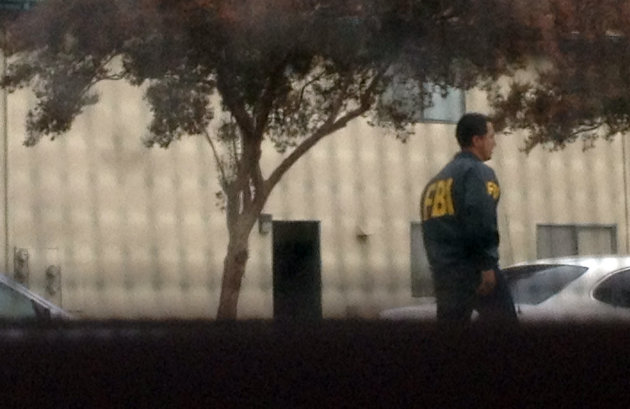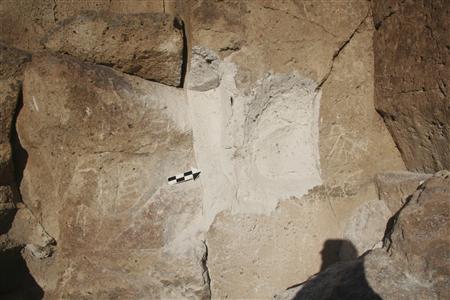Just two days before they
were going to board a plane bound for Istanbul — and then onto
Afghanistan — FBI agents thwarted plans that officials said included
killing Americans and bombing U.S. military bases overseas.
The arrests last week in the U.S.
and of the man said to be the ringleader, 34-year-old American Sohiel
Omar Kabir, in Afghanistan was laid out in a 77-page affidavit, which
included references to the group's online video conversations and audio
recordings.
While authorities don't believe there were any plans for an attack in the U.S., Kabir
had intended to go on a suicide mission earlier this month but got
sick, according to the court documents unsealed in federal court Monday.
Kabir
indicated he would wait for the group, which included a confidential
FBI informant, before staging an attack, according to the affidavit.
Along
with Kabir, Ralph Deleon, Miguel Alejandro Santana Vidriales and
Arifeen David Gojali are facing charges of providing material support to
terrorists. The charges can carry a maximum 15-year prison sentence.
Defense attorneys did not immediately returned calls for comment.
Federal
investigators said Kabir introduced Deleon and Vidriales to the radical
Islamist doctrine of the U.S.-born extremist cleric Anwar al-Awlaki,
who was killed last year in an American airstrike in Yemen.
Kabir,
a naturalized U.S. citizen from Afghanistan, served in the Air Force
from 2000 to 2001, helping to prepare forces for deployment. He was
administratively separated for unknown reasons and was given an
honorable discharge, the military said.
According to the court documents, Deleon
said meeting Kabir was like encountering someone from the camps run by
al-Awlaki or Osama bin Laden, who was killed in a U.S. raid last year on
his compound in Pakistan.
Kabir
was "basically a mujahid walking the streets of LA," Deleon said, using
the term for holy warrior, according to court documents. "He was just
waiting to get his papers. And I met him at the point of his life where
he was about to go."
Authorities
said that in video calls from Afghanistan, Kabir told the trio he would
arrange their meetings with terrorists. Kabir added they could sleep in
mosques or the homes of other jihadists once they arrived in
Afghanistan.
Stateside, Deleon and Santana were eager about the
prospects of being terrorists. When asked by the FBI informant if both
men had thought about how it would feel to kill someone, Santana
responded, "The more I think about it, the more it excites me."
Santana
said he was easily influenced by people growing up and spent time
around gangs. He said converting to Islam was a good move for him
because he could fit in and "actually fight for something that's right,"
according to court documents.
Santana was born in Mexico, while Deleon was born in the Philippines. Both are lawful, permanent U.S. residents.
Jen
Collins, who lives two doors down from Santana's apartment in Upland,
east of Los Angeles, said at least a dozen FBI agents swarmed his unit
early Friday. "It was like something coming out of the movies or TV,"
Collins said.
The apartment was shuttered on Tuesday, but someone
inside removed a sign that read "Don't burn the Qur'an, READ IT!" from a
shuttered upstairs window as reporters gathered outside.
Court documents show the men talked about their propensity for violence.
Santana,
who claimed he went to Mexico to learn how to shoot different kinds of
guns and how to make explosives, wanted to be a sniper. Deleon said he
hoped he could be on the front lines or use C-4, an explosive, in an
attack.
Gojali, a U.S.
citizen, was recruited in late September and he said he would be willing
to kill. "I watch videos on the Internet, and I see what they are doing
to our brothers and sisters. ... It makes me cry, and it gets like I'm,
like, so angered with them," Gojali said.
This past summer, plans to travel to Afghanistan became clearer for the group.
They
talked about how they would avoid detection. They talked about opening
an Afghan orphanage or possibly posing as cologne salesmen. They finally
devised a cover story that they were going to attend Kabir's fictional
wedding.
It's unclear whether
Kabir actually made contact with Taliban or al-Qaida fighters, but in an
August video conversation with Deleon, Kabir was with a shiekh or an
imam, the complaint said.
Before
leaving Deleon said he was going to leave parents a farewell letter.
Asked by the informant if Deleon could lie about his true intentions in
the letter, Deleon said, it's OK to lie in war. "I believe right now ...
we are in a state of war," he said.
Using
the informant's debit card, Deleon bought four tickets for a flight
from Mexico City to Istanbul scheduled to leave this past Sunday. Had
the men made it to Afghanistan, federal authorities believe they would
have initially joined the Taliban and then inducted into al-Qaida.
Even if he failed in a terrorist training camp, Santana said, he would continue trying.
"If
for some weird reason, if I can't handle it, I'm not going to give up,"
he said, according to court documents. "Like, because, this is my
strong intention. This is what I desire of doing in this life."











 Scientists hoping to detect
Scientists hoping to detect 







